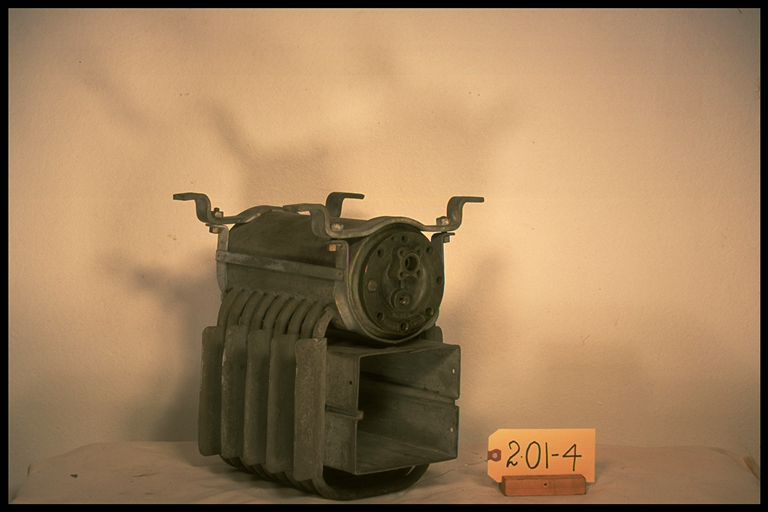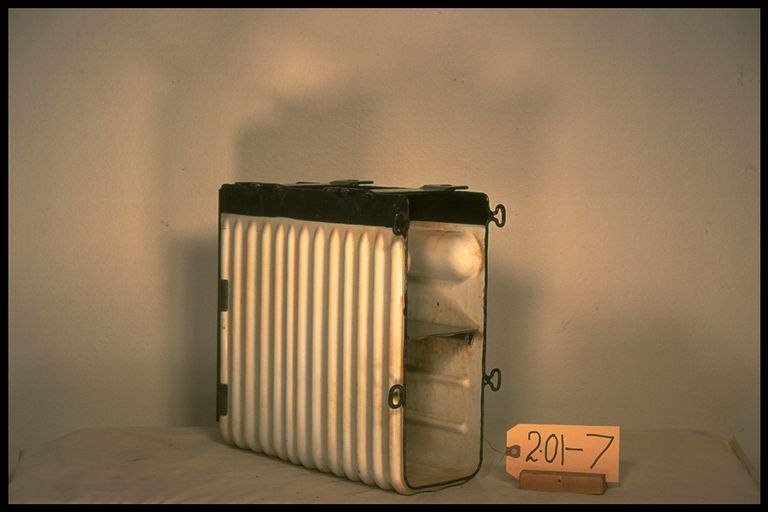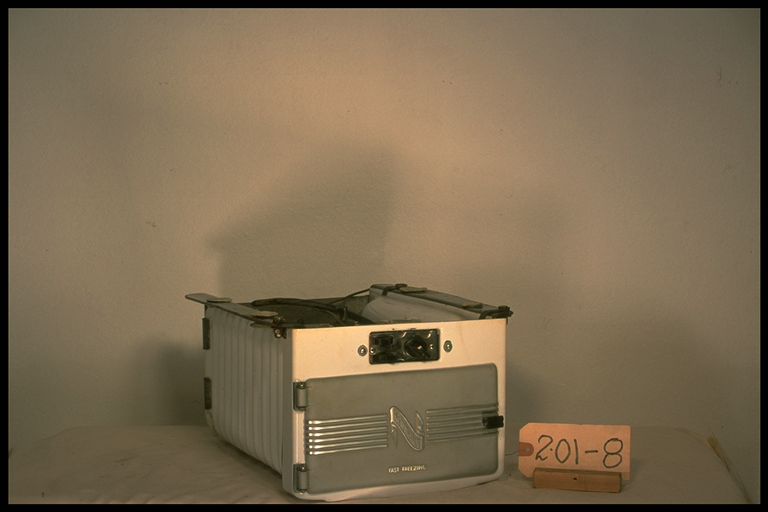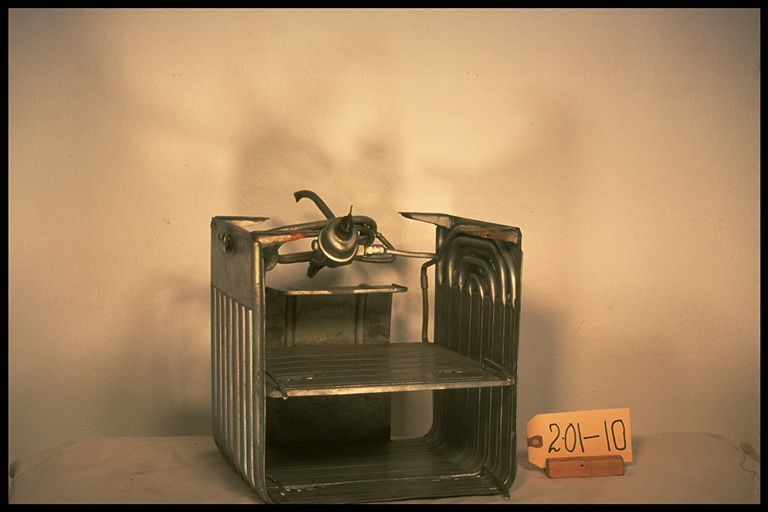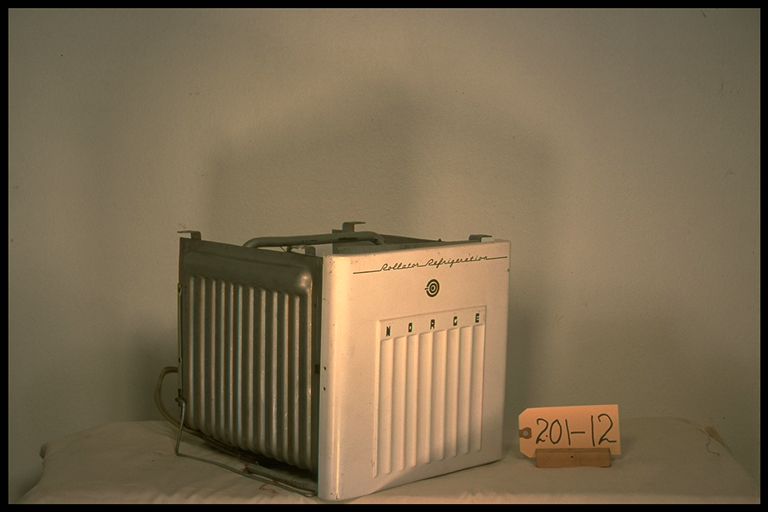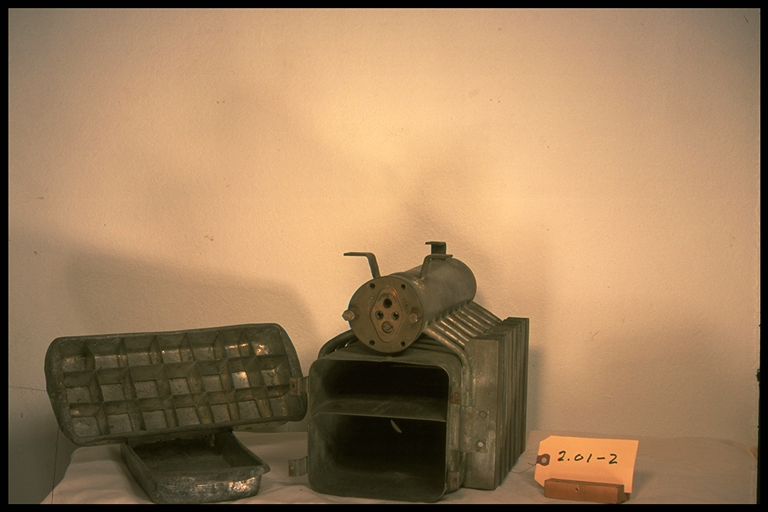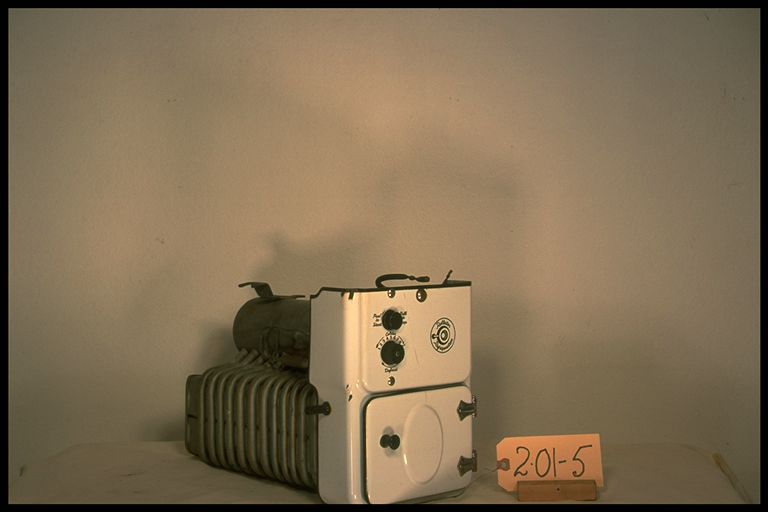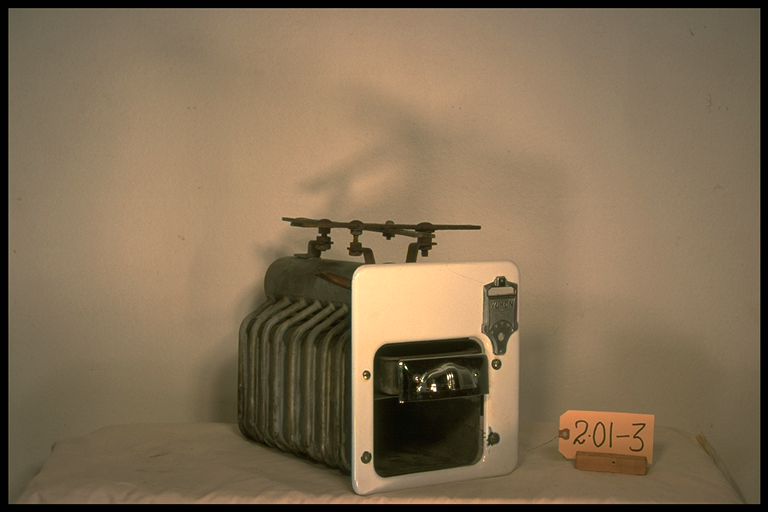2.01-13: Air Coils 1946 Two Tray Cooling Unit for Household Refrigerator

| HHCC Accession No. 2003.020 | HHCC Classification Code: 2.01-13 |
|---|
Description:
A general replacement, 2 tray cooling unit for household refrigerator. A transition evaporator technology; fabricated in aluminium, using coiled, tinned copper tubing, sandwiched between aluminium plates;. equipped with Ranco type KW remote bulb temperature control, Air Coils Oakville Ont. 1946
Group:
2.01 Refrigerating and Air Conditioning Evaporators - Household
Make:
Air Coils
Manufacturer:
Air Coils, Oakville Ont.
Model:
31-17
Serial No.:
Size:
10x 12x 9’h
Weight:
8 lbs
Circa:
1946
Rating:
New and unused, exhibit, demonstration, education and research quality
Patent Date/Number:
Provenance:
From York County (York Region) Ontario, once a rich agricultural hinterlands, attracting early settlement in the last years of the 18th century. Located on the north slopes of the Oak Ridges Moraine, within 20 miles of Toronto, the County would also attract early ex-urban development, to be come a wealthy market place for the emerging household and consumer technologies of the early and mid 20th century.
This artifact was discovered in the 1950’s in the used stock of T. H. Oliver, Refrigeration and Electric Sales and Service, Aurora, Ontario, an early worker in the field of agricultural, commercial and consumer technology.
Type and Design:
The evaporator was engineered by Air Coils for the general replacement market of the post World War II years. Full equipped and loaded with features for the period, it included the latest remote bulb tempertaure control technology of the times.
It employs an early engineering approach to aluminium evaporator construction. Coiled copper tubing is sandwiched between high conductivity aluminium plates to form the top, bottom and shelf of this 2 tray, ice making, evaporator. The cabinet is of formed and riveted in aluminium sheet stock with 1” fins at 1” centres on the two sidewalls.
Construction:
This simple approach to fabrication set aside, for the moment, the major problem to be overcome in the engineering of aluminium evaporators. The challenge was to develop robust bonding techniques required for pressure tight connections between copper and aluminium. In 1946 these techniques were yet to be perfected. The repair of leaks in aluminium evaporators would remain a challenge for the industry. The early aluminium stock was also soft and easily punctured.
Material:
Special Features:
Accessories:
Capacities:
Performance Characteristics:
Operation:
Control and Regulation:
Targeted Market Segment:
The replacement market of the post World War II years was substantial. Not only due to the scarcities of wartime, but also the significant improvements in technology, and the Canadian consumer’s desire to modernise.
Consumer Acceptance:
Merchandising:
Market Price:
Technological Significance:
The significance of this specimen, like 019, rests in its evolutionary context. It is part of the dynamic, rapidly changing pattern of developmental events that saw the Canadian refrigeration industry move beyond its crude, early offerings to the households of the nation and do so in a period of much less than two decades.
Of special significance, technologically, is the dramatic tansition from the crude designs of the 1920’s and 30’sto those of the 40’s enabled by new materials science and newly informed engineering theory and practice. .
Industrial Significance:
Socio-economic Significance:
Socio-cultural Significance:
What is dramatised, here, is the social and cultural commitment of the period to up-grade, repair and maintain, rather than replace. While a function of the supply market of the day, more importantly the behaviour pattern reflected the core, prevailing value system of Canadians - their respect for thrift and getting by. These core values would, however, change dramatically over the next decade, as a result Canada’s consumer society about burst on the scene with explosive force. .
Donor:
G. Leslie Oliver, The T. H. Oliver HVACR Collection
HHCC Storage Location:
Tracking:
Bibliographic References:
Notes:
Related Reports:
Exhibition Catalogue for CMX02 show, March 2002
